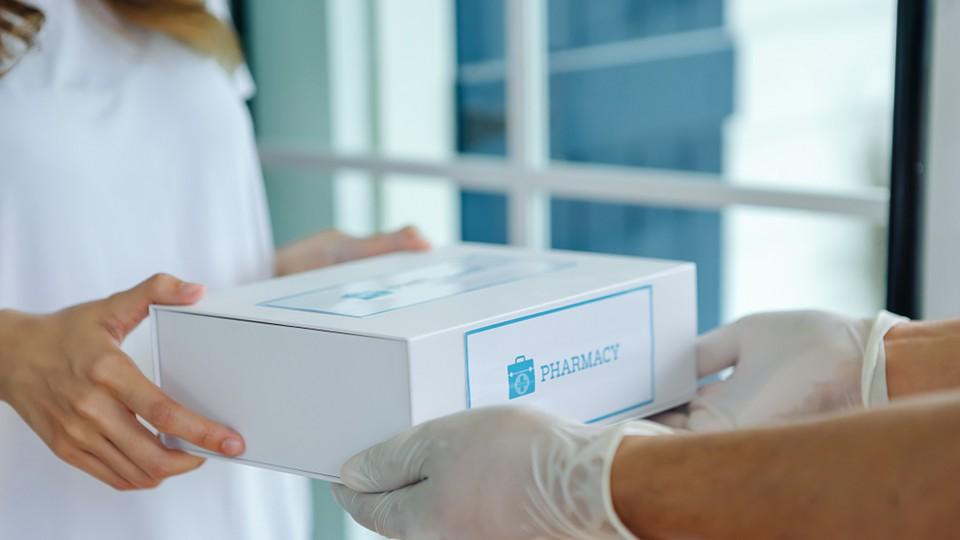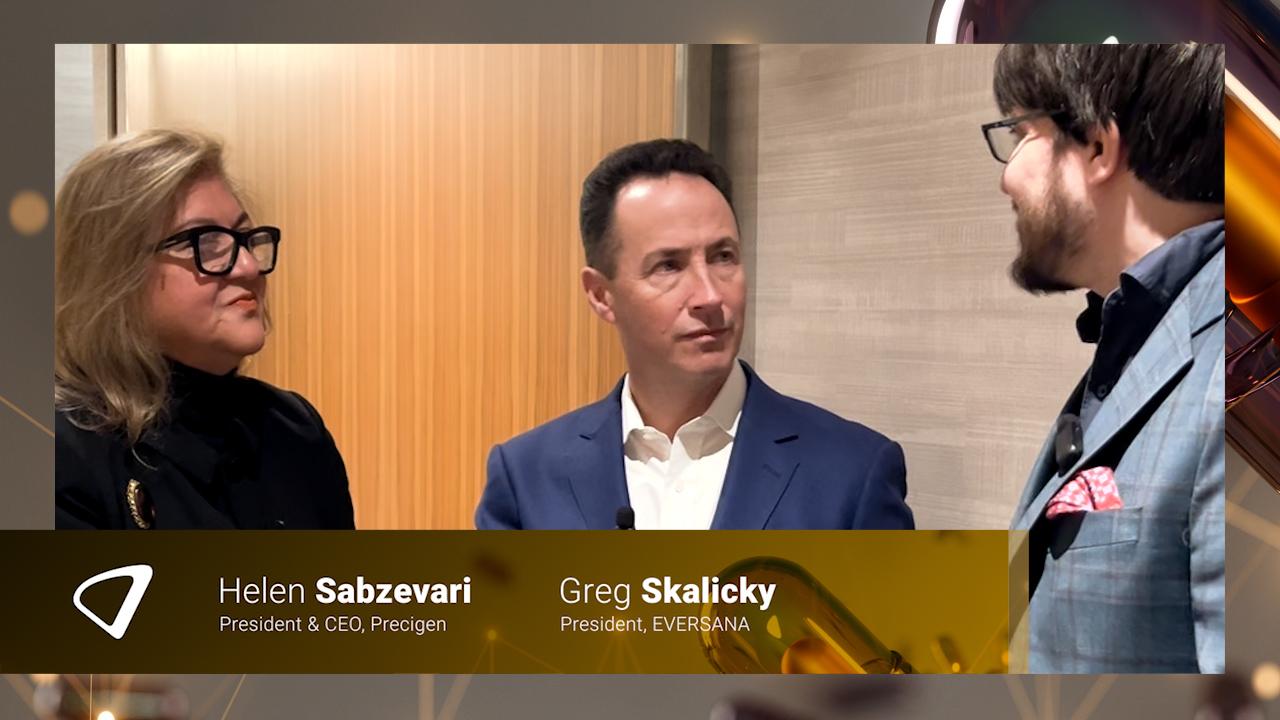Digital innovation and the Direct-To-Patient Model

Innovation is of no worth if it doesn’t provide better outcomes for patients. Indeed, such advancements should hold as centre the amelioration of the overall patient experience. And that’s where digital developments and a Direct-To-Patient (DTP) approach come in.
As Frontiers Health 2024 approaches, taking place in Berlin 17th and 18th October, pharmaphorum sat down with one of its speakers, Scott Snyder, Chief Digital Officer at EVERSANA, to learn more about Snyder’s upcoming panels at the conference, and EVERSANA’s own DTP model.
Transforming the pharma commercial model with AI
In the first panel to be moderated by Snyder – who is also Senior Fellow in the Management Department at The Wharton School, as well as Digital Economy Platform Senior Fellow at the World Economic Forum – panellists will explore how generative AI (GenAI) is revolutionising, accelerating, and enhancing drug discovery, clinical trials, patient care, and commercialisation. With GenAI set to become a workforce partner for 90% of organisations globally in 2025, the question is, simply, whether organisations are ready.
“Classical or predictive AI, we've been using that for decades,” said Snyder. “Everything from patient finding, using medical record or claims data to go find patients that might be undiagnosed, to predicting demand in our supply chains, to even doing things like basic understanding of which patients or HCPs to target for a specific type of medication or promotion. I [would] say drug discovery for sure has been using AI for a while.”
“Then comes GenAI, which, if you think of classical AI as the left brain, then Gen-AI as the right brain, it's this creative, intuitive, sometimes unpredictable capability of AI that can create,” continued Snyder. “When you start thinking about the ability to chunk through text or images or videos or other types of content and make sense of it, GenAI has these really unique capabilities to develop insights from that very fast.”
“I think we've seen this in other tech waves, whether it was mobile or even things like e-commerce: there's a lot of excitement at the beginning,” said Snyder. “The disruptive potential looks really high, and there are a lot of fits and starts, and it takes much longer than we expect. The impact happens, and it is transformative, but it just takes longer.”
“I think we're in that phase of early fits and starts with GenAI,” he continued. “And I think, especially when you look at regulated industries like pharma, there are use cases that make a tonne of sense and are starting to chip away. There's others [though] that, frankly, people are still wrestling with: can we tolerate the risk or the error in a certain use case that might face a patient or an HCP? 80% of companies say they're experimenting, but only about 11% say they're actually deploying these solutions at scale.”
Behaviour change for effective digital innovation
And when it comes to scaling, alongside any implementation of advanced technology and its innovative capabilities, comes the need for behaviour change, and upskilling in the workforce.
“It’s not just about the model or building these GenAI models; it's also all the change that has to happen around it, changing the way people work, changing the way the process looks, changing the experience” explained Snyder. “If you don't do those other things, then you're going to fall short of achieving the impact that you want with GenAI.”
“A lot of what we'll talk about is how do we balance the excitement and the opportunity with the risks and the ability to really build momentum, like get points on the board,” Snyder shared. “When you bring up AI to people, it's both excitement and exhaustion. Everybody is in some ways tired of talking about it, but also they're excited about the possibilities. Really balancing the long-term potential with the short-term, how do we get quick wins?”
“We’ll talk about this notion of “pharmatizing” AI, which includes managing those risks that are super important so we don't harm our customers, our patients, et cetera,” said Snyder. “As we get past the hype cycle and really drive impact, what is that going to look like? How's marketing going to change? How's field and medical affairs and how's patient support going to dramatically change if we think about what it looks like in an AI-first world? I'm excited to engage the panel on all those questions.”
What is being seen now are what Snyder terms “dramatic gains” in AI-driven R&D companies. Referencing AtomWise and Insilico Medicine as companies attaining “real results”, however, it is clear that it is when the patient becomes important in planning the commercial journey that things really take off.
“I mentioned patient finding, but now put GenAI on top of that, [and] we can start to allow patients to educate themselves or interact in their own words and in their own context with something like GenAI,” Snyder explained. “That interface of natural language and conversation really lowers the barrier to engaging with technology that I think existed before with a lot of digital health tools.”
“[Before,] if you didn't have a wearable or if you weren't adept at interacting with your mobile phone, you might not feel comfortable,” said Snyder. “Now, with GenAI, it's literally your voice. Your voice is the language of interaction. I think that's exciting. I think that's also playing out both externally, but also internally in helping everything from field representatives to patient assist coordinators doing their job better with AI.”
The panel ‘Transforming the Pharma Commercial Model with AI’ will take place on Thursday 17th October and bring together: Alyssa Fenoglio, VP & Global Head of Digital Commercial at TEVA Pharmaceuticals; Kimberly Noel, Global Lead of Artificial Intelligence Advocacy & Digital Health at Roche; and Karthik Parameswaran, VP and Strategy & Consulting Lead of Commercial (Marketing, Medical Affairs, Market Access) at Pfizer.
Patient centric 3.0: Why a Direct-To-Patient model is a gamechanger
The second Frontiers Health panel will take place on Friday 18th October and look at how innovation will continue to bridge commercialisation service industry gaps to improve access, affordability, and adherence for patients. That panel will again welcome Karthik Parameswaran, as well as: Brandon Drew, Senior VP & Global Head of Developed Brands at UCB; and Malin Johansson, VP of Digital Health Partnerships and Commercialisation at Novo Nordisk.
But just what is the state of patient access, affordability, and adherence today, generally?
“There are still medical deserts in many markets,” began Snyder. “In fact, about one-third of patients in the US don't have a primary care physician that they can identify, so that's obviously a challenge, especially when you're trying to understand what condition you might have and if you need to see the specialist. Then, the wait times to see a physician average one month, and for specialists that can be three to six months in some specialties. Once again, that's a big challenge, especially if a patient has an acute need to see somebody.”
“The other piece of it is, physicians are overburdened, so that just adds to the access challenge,” continued Snyder. “They just don't have the capacity to see all the patients they need to. Then, when they do prescribe a treatment, we have an adherence problem, where 50% of patients on most drugs are non-adherent, don't follow their regimen as prescribed, and about 38% of prescriptions never get picked up. You think about that. Even if we can get and navigate the gauntlet of getting these patients on treatment, sometimes they have trouble staying on treatment.”
EVERSANA’s DTP model
Turning to the DTP model itself, and EVERSANA’s work in that regard – in December 2022, PM360, the leading pharmaceutical industry publication, named EVERSANA’s Direct-to-Patient Care Model one of the most innovative strategies of 2022. The model includes seven commercialisation disciplines and was the industry’s first and only patient-led virtual care model. The promise of the Direct-to-Patient (DTP) model, it seems, is the enabling of a world where patients can swiftly access the right specialists, understand complex therapies, and navigate insurance without difficulty. In other words, it assists with those challenges of access, affordability, and access.
“We recognised it was an opportunity to not just add a channel, but to rethink the commercial model around the end-to-end patient journey,” explained Snyder. “Today, whether we like it or not, pharma is really not organised around the patient journey. Marketing, sales, patient support, supply chain, compliance – they're all their own lanes, and there's hard handoffs, and there's a lot of drops, but it's not really organised to deliver the best patient experience.”
“I think what's cool about direct-to-patient is we have the opportunity to organise those capabilities,” he continued. “Think of them like Lego blocks that we can reassemble based on what patient journey we're trying to support and what product scenario, whether it's a rare disease or a retail-like product, like migraine or weight loss or some type of specialty drug: they're all going to have slightly different journeys and needs to get those patients aware of their condition, being able to take action, and then be able to fulfill and get access to the treatment. And so, how do we navigate those in the easiest way?”
By thinking about it end-to-end.
“What's exciting is, with models in the market today, I think it's created some momentum in the marketplace so that other pharmas and leaders are starting to pay attention and saying, ‘Well, does this apply to some of my products? What's the right way to go about doing this?’ Versus trying to just tack on a telehealth link or contract with a digital pharmacy.”
And, when it comes to integrating such digital solutions, the connecting piece is data analytics.
“We have a backplane we call Orchestrate, which is an appropriate name, given we're really trying to “orchestrate” that journey around each unique patient from upstream, and making sure whether it's third-party educational sites or patient communities, or social campaigns to engage them,” said Snyder. “Then, whether it's them going through the virtual care channel or making it easy for an HCP to have a link to onboard those patients, [and] having a fulfillment model that can optimise based on any patient condition, whether it's based on their access, their convenience, or their affordability.”
“All that's underpinned by data and intelligence to make sure that that experience is seamless for the patient and can happen as fast as possible,” explained Snyder. “We reduce time to therapy, we lower acquisition costs, and we lower support costs overall. Most importantly, we deliver a great experience for the patient.”
Better outcomes for patients, and for pharma
Snyder believes that the time is ripe, that healthcare finally has the opportunity to rise to the same challenges as other industries, like retail and banking, in terms of digitalisation, e-commerce, and a blended omnichannel experience that delivers expected personalisation.
“We as consumers and as patients expect personalisation, convenience, immediacy. In the past, healthcare and pharma haven't really delivered on that. I think with direct-to-patient and these personalised experiences, we can truly deliver on this one-to-one experience that's going to both make patients feel better, get to better outcomes, but also create better economics for pharma,” Snyder concluded.
It’s not too late to register for Frontiers Health and be there in Berlin for these exciting and relevant conversations.
About the interviewee
 Scott Snyder serves as EVERSANA’s Chief Digital Officer, driving digital transformation for employees, clients, and the patients we serve. He brings more than 30 years of experience in emerging technologies and digital transformation across both global 1000 companies and startup ventures. Snyder is an industry expert on how enterprises can leverage digital and other emerging technologies to accelerate innovation and new venture creation. He has held executive positions with several Fortune 500 companies and has been a featured thought leader in publications including CIO, WIRED, Forbes, Knowledge@Wharton, Los Angeles Times, and The Wall Street Journal. Snyder is also the co-author of Goliath’s Revenge, a book focused on how established companies can turn the table through digital disruption. He earned his BSc, MSc, and PhD in Systems Engineering from the University of Pennsylvania. Snyder is currently a Senior Fellow in the Management Department at the Wharton School.
Scott Snyder serves as EVERSANA’s Chief Digital Officer, driving digital transformation for employees, clients, and the patients we serve. He brings more than 30 years of experience in emerging technologies and digital transformation across both global 1000 companies and startup ventures. Snyder is an industry expert on how enterprises can leverage digital and other emerging technologies to accelerate innovation and new venture creation. He has held executive positions with several Fortune 500 companies and has been a featured thought leader in publications including CIO, WIRED, Forbes, Knowledge@Wharton, Los Angeles Times, and The Wall Street Journal. Snyder is also the co-author of Goliath’s Revenge, a book focused on how established companies can turn the table through digital disruption. He earned his BSc, MSc, and PhD in Systems Engineering from the University of Pennsylvania. Snyder is currently a Senior Fellow in the Management Department at the Wharton School.












